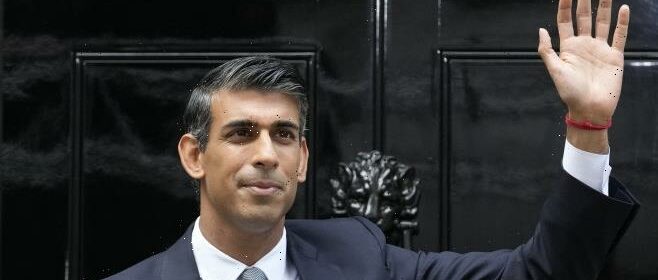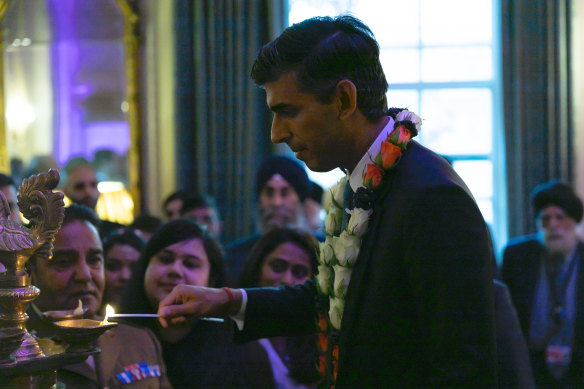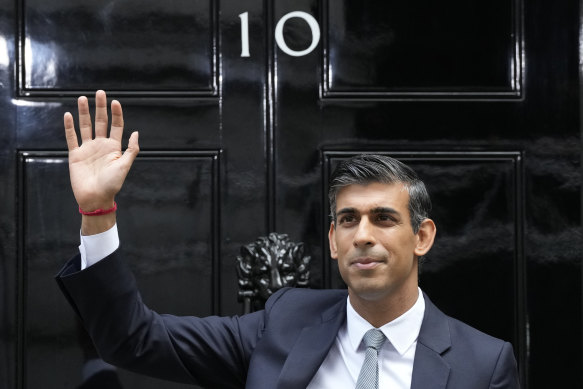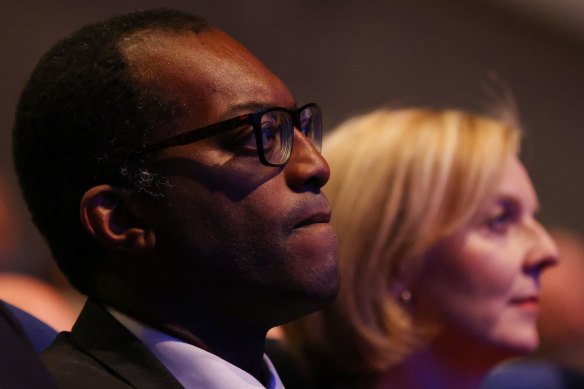Only a matter of time before Australia has its own Rishi Sunak

When a week ago the UK Conservative Party chose a Hindu of Indian origin to be the United Kingdom’s next prime minister, it was a significant moment in that country’s history.
It was also unsurprising.
Prime Minister Rishi Sunak hosts a reception to celebrate Diwali in Number Downing Street.Credit:Downing Street
London Mayor Sadiq Khan is a Muslim of Pakistani origin.
The Home Secretary Suella Braverman is a Buddhist of Indian origin.
Her predecessor, Priti Patel, is of Ugandan-Indian origin.
Foreign Secretary James Cleverly’s mother is from Sierra Leone.
New British Prime Minister Rishi Sunak outside Downing Street.Credit:AP
The previous chancellor Kwasi Kwarteng is the child of Ghanaian immigrants.
Kemi Badenoch, the secretary of state for international trade, was born to Nigerian parents, spending part of her childhood in Lagos.
In other words Rishi Sunak’s arrival in Number 10 Downing Street reflects the reality of modern Britain. A nation in which it is normal for the faces of those occupying high office to be non-white, and where one in four children has an immigrant mother.
The change in the capital has been even more stark. Between 1971 and 2011 the percentage of “white British” residents of London dropped from 86.2 per cent to 42.7 per cent.
The huge change in the ethnic composition of Britain in such a short time has been just as remarkable as the rise of the new arrivals (or their children) to the top of the country’s institutions.
That this has occurred at the same time as the Left has become obsessed with sniffing out white privilege and institutional racism is one of the ironies of our age.
It must also be confronting to the Left that all the aforementioned politicians bar the Mayor of London are members of the Conservative Party, as were all three of Britain’s female prime ministers.
In 2020, Badenoch outraged the Left in a House of Commons debate on the higher rate of COVID deaths among black, Asian and minority ethnic communities – BAMEs – as they’re known in the UK, by declaring Britain is “one of the best countries in the world to be a black person”.
Earlier this year, finally recognising that the experiences of Britain’s many ethnic communities are now so different the government decided to stop using BAME as catch-all descriptor for the non-white population.
Modern Britain is undoubtedly ethnically diverse, but how did it come to be that the politicians representing it mirror that diversity? If there is something all these successful politicians share in common – aside from determined parents – it’s a commitment to education.
Though Sunak is now extremely wealthy, having made a fortune as a merchant banker then married into one of India’s richest families, his parents were not.
His GP father and pharmacist mother had to stretch to send him to Winchester, one of Britain’s poshest and most expensive schools.
Similarly, Kwarteng’s parents paid for him to go to a private primary school from which he won a scholarship to an even posher one than Sunak, Eton.
Kwasi Kwarteng, former UK chancellor.Credit:Bloomberg
But of course there are plenty of well-educated ambitious children of migrants in every Western nation, including Australia. Yet there are comparatively few non-white faces in our Parliament.
So how did the British Conservatives do it?
The Conservative Party doesn’t have quotas for gender or ethnic diversity as such.
But it does have a list of potential candidates that constituencies are encouraged to pick from which skews towards women and ethnic minority groups.
But these candidates can’t be imposed on the preselectors, they still have to win the votes of local Conservative Party members. And having been picked, they then of course have to actually win the seats.
Sunak lost his first preselection.
When he went for his now constituency of Richmond, in Yorkshire, the brown-skinned investment banker from the south of England had to win over local Tories, a group largely made up of North Yorkshire farmers. He was undoubtedly assisted by the retiring member endorsing him.
The experience in the United Kingdom makes clear that a thriving multiracial and multifaith democracy is possible without quotas.
But there’s another ingredient: time.
Large numbers of Indians, Pakistanis and West Indians began arriving in Britain 1950s, which continued for several decades.
In the 1950s, the Menzies government was making tentative steps towards ending the White Australia policy, but it wasn’t until the second half of the 1960s that substantial numbers of non-European migrants began settling here.
Though we have just elected our most ethnically diverse Parliament in our history, we are clearly still miles behind Britain, in both the number of minority MPs elected and the diversity of the ministry.
But if Britain shows us anything, it’s that we don’t need to panic about the speed with which our institutions have absorbed the children of migrants.
Thirty years ago it was remarkable if someone with a Greek or Italian surname was a leader of industry or a minister. Nowadays, we don’t bat an eyelid. Before we know it, the same will be true of those from Indian, Asian or African backgrounds. Change takes time but it does come.
Get a note directly from our foreign correspondents on what’s making headlines around the world. Sign up for the weekly What in the World newsletter here.
Most Viewed in World
From our partners
Source: Read Full Article


